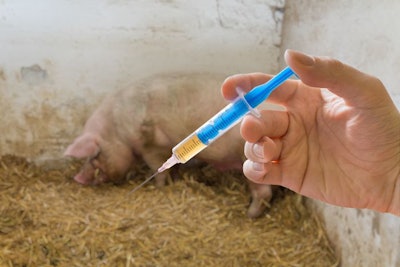
New vaccine technologies could help fight deadly animal diseases, scientists say
Scientists are set to evaluate whether new and emerging technologies could be applied to create more effective, safer vaccines against some of the most challenging livestock diseases, including African swine fever.
Two research collaborations, coordinated by The Pirbright Institute in the U.K., will spend the next three years applying new approaches to the creation of vaccines for African swine fever (ASF), porcine reproductive and respiratory syndrome (PRRS) and bovine respiratory syncytial virus (BRSV).
Although there are already several several functional ASF vaccines in the works, Chris Netherton, head of the African swine fever vaccinology group at Pirbright, said it remains difficult to distinguish vaccinated pigs from pigs that are infected with the virus and capable of spreading it.
The conventional approach to ASF vaccination, he said, involves trying to find and delete the gene that allows the virus to cause disease. The modified virus is then injected into the pig, where it triggers an immune response without causing the animal to fall ill.
But because of the massive size of the ASF virus genome — some five times larger than the virus that causes COVID-19, according to Pirbright — locating specific genes for deletion has proven difficult. Rather than selecting individual genes to study how they behave, Netherton said he and his colleagues plan to start with the bigger picture. They’ll observe how the viral genome interacts with the host, and then zero in on the genes that seem most important, potentially identifying new pathways for a vaccine — or for the development of an effective antiviral drug.
“As a scientist, you pick pathways you think are important, and then you try to figure out why that’s important, “ Netherton said. “We’re trying to take a less biased approach … looking at a whole range of responses and then selecting.”
This approach to studying the virus is only possible, Netherton said, thanks to relatively recent advances in technology that allow scientists to analyze DNA sequences more quickly.
The situation is similar for the second project targeting PRRS and BRSV, according to Simon Graham, head of the PRRS immunology group at Pirbright. Vaccines against these diseases, he said, are also made using weakened versions of the virus. But as demonstrated by COVID-19, there are now other ways of developing and manufacturing vaccines.
In this case, Graham said, his team plans to trial the use of a PRRS vaccine that is built using DNA rather than the virus itself. There is evidence, he said, that DNA-based vaccines may be more effective in very young animals than conventional vaccines.
Although animals typically receive some immune protection from their mother’s colostrum, Graham said, this protection can actually interfere with the efficacy of vaccines. This allows young animals to contract the virus, which Graham said is allowing PRRS to continue to spread and mutate into new variants.
Conventional vaccines provide some protection even in young animals, Graham said, but the DNA vaccine may be even more effective at that age and may help “prime” the immune system to receive future booster doses of the vaccine.
Graham said the team’s plan for their study is to follow the DNA vaccine with a second dose of a more conventional vaccine made from live modified virus to see if the DNA-based vaccine does in fact boost the efficacy of future doses. The virus in the second vaccine will also be genetically engineered to induce even greater protection using an emerging technique that uses natural processes called immune checkpoint inhibitors to regulate how the immune system responds to the vaccine.
“Most checkpoint inhibitors are in human trials,” Graham said, so Pirbright will be working with a pharmaceutical company he said has found a way to make the desired modifications to the virus more easily.
“Ideally what we want to do is stop the virus,” he said. “To stop the transmission of the virus because these suboptimal immune responses are driving the evolution of the virus and we’re getting more and more strains circulating around the world.”
View our continuing coverage of the African swine fever outbreak.

















